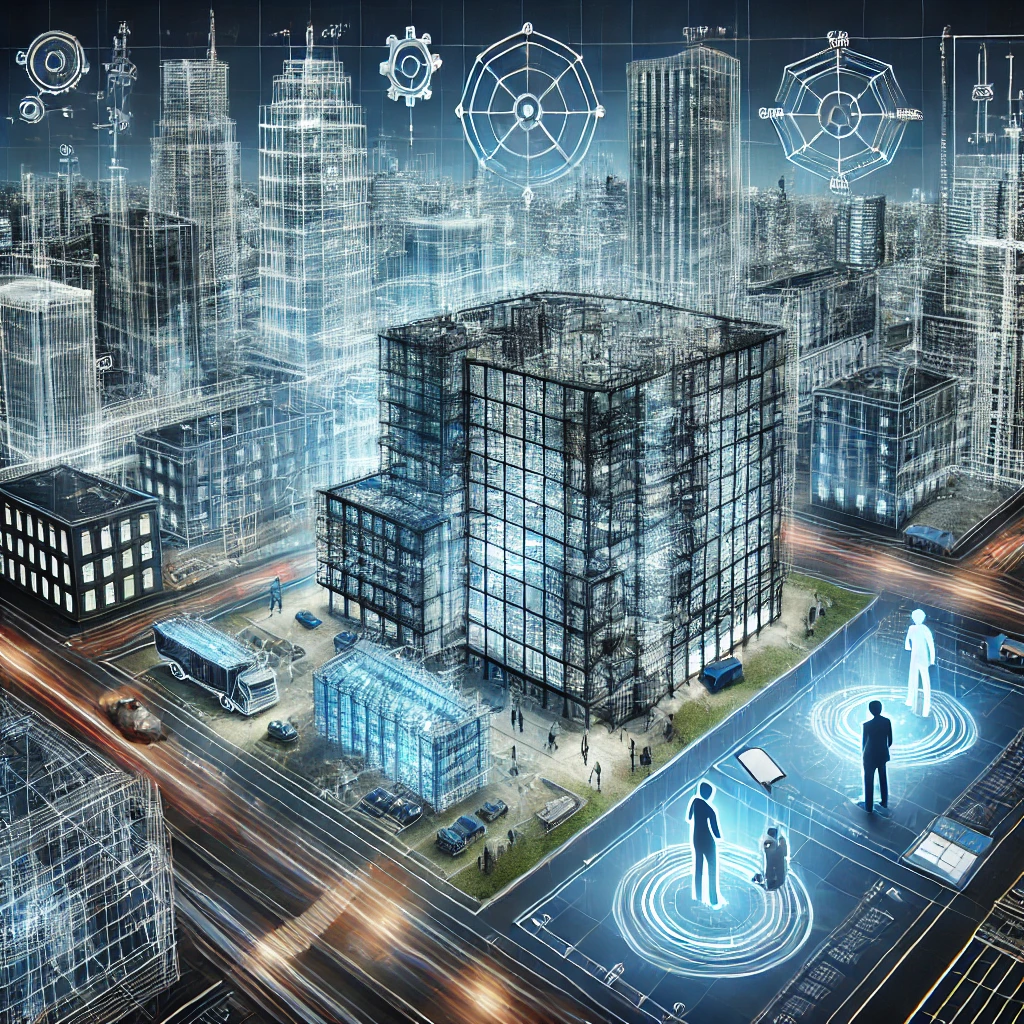
What is BIM Modeling?
Definition and Core Concepts
Building Information Modeling (BIM) is a digital representation of physical and functional characteristics of a building. It serves as a shared knowledge resource, forming a reliable basis for decision-making throughout a project’s lifecycle. Unlike traditional 2D CAD drawings, BIM enables a 3D, data-rich model that enhances collaboration and efficiency in design and construction.
How BIM Differs from Traditional CAD Methods
Traditional Computer-Aided Design (CAD) relies on separate 2D drawings that require manual updates. In contrast, BIM creates an interconnected, intelligent model, ensuring real-time updates across all project disciplines. Key differences include:
- Data-Driven vs. Static Drawings: BIM integrates metadata, material properties, and cost estimates.
- 3D Modeling vs. 2D Drafting: BIM supports 3D visualization and simulation.
- Collaboration: BIM allows multiple teams to work on the same model, reducing errors and inconsistencies.
Evolution and Growth of BIM in the AEC Industry
BIM adoption has grown rapidly across Architecture, Engineering, and Construction (AEC) due to its efficiency and cost-saving benefits. Governments worldwide, including the UK, US, and Australia, now mandate BIM for public infrastructure projects.
Benefits of BIM Modeling Services
Enhanced Collaboration and Coordination
BIM enables seamless team collaboration by allowing architects, engineers, and contractors to work on a single, updated model. This eliminates discrepancies, reducing rework and project delays.
Cost and Time Efficiency in Construction Projects
BIM improves cost estimation accuracy through 5D BIM, integrating time and budget data into the model. This leads to:
- Fewer design clashes (reducing costly modifications).
- Optimized material usage (minimizing waste).
- Faster project completion with automated scheduling.
Improved Visualization and Simulation
BIM software like Autodesk Revit and Navisworks allows for advanced 3D modeling and simulations. This helps stakeholders understand spatial relationships before construction, preventing potential issues.
Types of BIM Modeling Services
Architectural BIM Modeling
Architectural BIM focuses on designing buildings with precision, ensuring aesthetic appeal, spatial planning, and compliance with regulations. It helps architects create detailed 3D representations and analyze energy efficiency, lighting, and materials.
Structural BIM Modeling
Structural BIM enhances the design, analysis, and documentation of load-bearing structures. Engineers can perform stress analysis, reinforcement detailing, and clash detection to improve project safety and durability.
MEP (Mechanical, Electrical, Plumbing) BIM Modeling
MEP BIM ensures efficient HVAC, electrical, and plumbing system design, preventing installation conflicts. It helps optimize energy efficiency, air circulation, and utility placements in complex structures.
4D, 5D, and 6D BIM Services
- 4D BIM (Time Management): Integrates construction sequencing for better project scheduling.
- 5D BIM (Cost Estimation): Provides accurate budget forecasting and cost tracking.
- 6D BIM (Sustainability): Incorporates energy efficiency and environmental impact analysis for green buildings.
Scan to BIM (Point Cloud to BIM Conversion)
Scan to BIM converts laser-scanned point cloud data into 3D BIM models, aiding in renovations, heritage restoration, and facility management with high accuracy.
How BIM Modeling Enhances Project Workflow
Clash Detection and Conflict Resolution
BIM uses advanced clash detection tools like Navisworks to identify and resolve design conflicts before construction begins. This reduces costly rework and improves project accuracy.
Streamlining Facility Management
Post-construction, BIM models serve as digital twins, aiding facility management and maintenance by storing essential data about building components, utilities, and life-cycle costs.
Improving Stakeholder Communication
BIM enhances transparency among stakeholders by providing visualizations, real-time updates, and accurate documentation, ensuring smooth project execution and informed decision-making.
Industries Benefiting from BIM Modeling
Construction & Infrastructure
BIM enhances project execution for large-scale infrastructure developments, such as bridges, tunnels, and transportation networks, by improving coordination and minimizing errors.
Real Estate Development
Developers use BIM to visualize designs, analyze feasibility, and optimize building performance before construction, reducing risks and maximizing investment returns.
Civil and Structural Engineering
BIM assists civil engineers in designing and analyzing roads, dams, and water management systems, improving safety and sustainability in urban planning.
Manufacturing and Prefabrication
BIM supports prefabrication by providing detailed models for manufacturing components off-site, ensuring precision, cost savings, and reduced waste.
Conclusion – The Road Ahead for BIM in Construction
BIM modeling services are transforming the AEC industry, offering unmatched efficiency, accuracy, and cost savings. As technology evolves, BIM will continue to integrate with AI, automation, and IoT, further enhancing construction workflows and sustainability. Companies that adopt BIM today position themselves for a future of smarter, more efficient buildings and infrastructure.
Frequently Asked Questions (FAQs)
1. What are BIM modeling services?
BIM modeling services involve the creation of intelligent 3D models that store data about a building’s design, construction, and operations, improving project efficiency and collaboration.
2. How does BIM benefit construction projects?
BIM reduces errors, improves coordination, enhances visualization, and optimizes cost estimation, leading to faster project completion and minimized risks.
3. What is the difference between 3D CAD and BIM?
3D CAD provides static geometric representations, while BIM integrates data-rich models with real-time updates, enabling collaboration and lifecycle management.
4. Which industries use BIM modeling?
BIM is widely used in architecture, construction, infrastructure, real estate development, civil engineering, and manufacturing.
5. What is the future of BIM?
The future of BIM includes AI-driven automation, digital twin technology, AR/VR integration, and increased sustainability initiatives, revolutionizing how buildings are designed and managed.
Would you like me to make any final refinements?
Learn about Precast vs. Traditional Construction: Which Saves More?